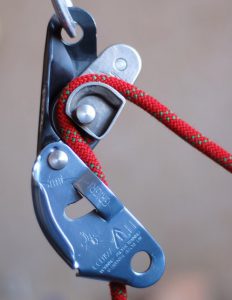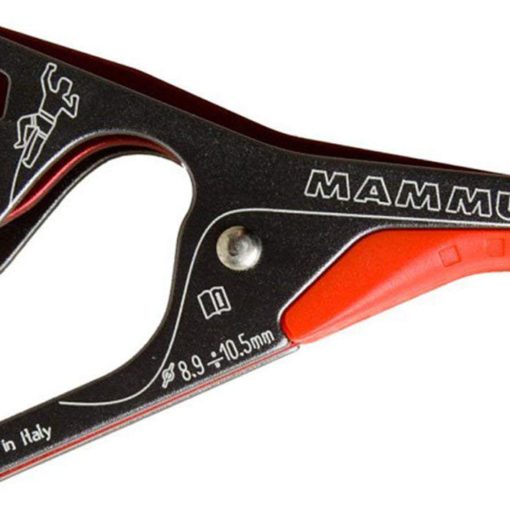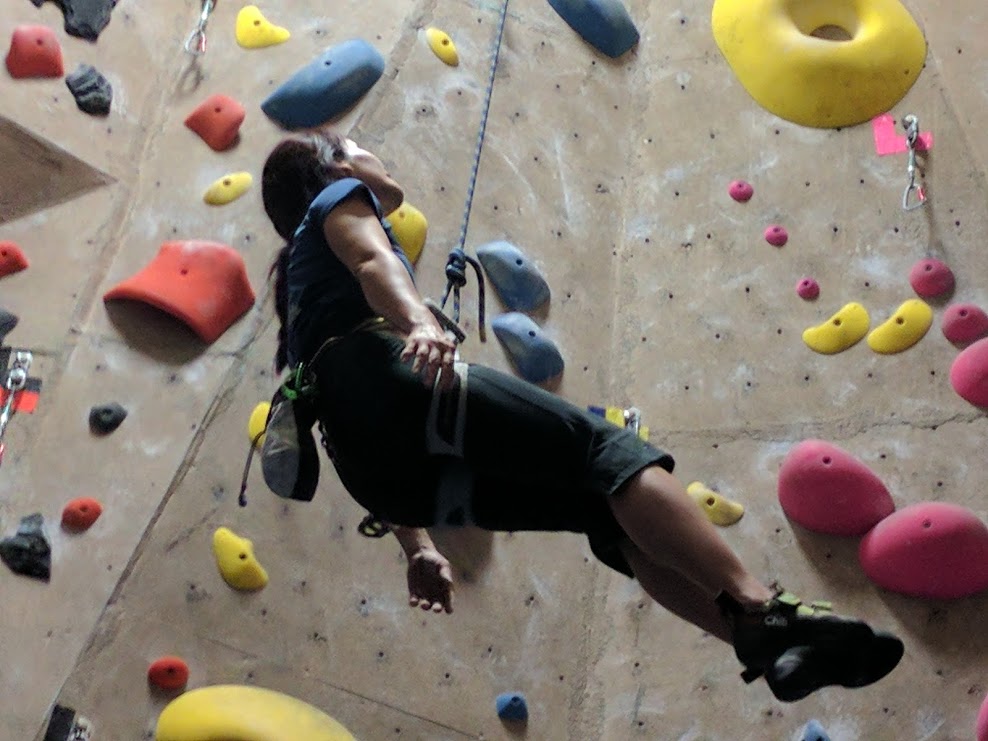If you are new to climbing, you may wonder what is an assisted braking belay device? First of all, a belay device is a piece of small mechanical climbing equipment made out of aluminum or an alloy to act as a friction brake for rock climbing. There are three types: tubular devices, assisted braking, and auto-belay devices. Please visit my article on “What is a Belay Device” to learn more.
An assisted braking belay device is exactly what the name said. It assists the belayer with braking. In this article, we will focus primarily on the assisted braking belay device and the different types available in the US market. Hopefully, this will provide a basic knowledge of the available devices to find what works best for you.
Functions
With the tubular device, it is a manual belay device where you have to put your brake hand tightly down on the rope to hold the climber in mid-air when fall. If you let go of the rope, the rope will come free and the climber will fall. Whereas the assisted braking device, it has a special mechanism that supports the belayer in braking. A worst-case scenario and God forbid a rock tumbles down and knock the belayer unconscious. Generally, the assisted braking mechanism is still intact and the rope would not release.
In the last quarter of the century, the assisted belay devices have evolved in the ergonomic design, lowering, loading, and ease of use. We have many more to choose from than ever before. These devices work by two types of mechanisms: the moving parts which are known as active and the geometry of the device which is known as passive. They help make belaying easier in the controlling of the rope and reducing the hand stress of holding or lowering the climber.
The Different Types
I compiled a list of the seven different well-known manufactures with the latest version of their assisted braking devices. For the most part, these devices support primarily single rope and single pitch climb with a few exceptions such as the Mega Jul Sport and the Smart Alpine.
The Grigri+
The most well-known active assisted braking device is the Grigri. It is designed with a cam mechanism to assist the braking.
Petzl came out with the latest version called the Grigri+. Petzl boasted that it is designed for all climbers both indoor and outdoor climbing. It offers two usage modes to choose from top-rope belay or lead belay and anti-panic handle. When the belayer pulls too hard on the handle, the anti-panic button breaks and stops the descent. These particular new features support new belayers on their learning curve.
The MSRP for Grigri2 is $99.95 and Grigri+ is $149.95. To learn more about the advantages of the Grigri+, please check out my latest Grigri Belay Device Review.
Below is a video of the Grigri+ and how to use it by Petzl Sport:
The ATC Pilot
The Pilot is Black Diamond’s latest passive assisted belay device with enhanced braking. The device shape is designed to assist the braking and lowering of the rope. It is simple but effective. The MSRP for the Pilot is $44.95. To read more, please visit my Black Diamond ATC Pilot review.
This is a how to: ATC Pilot video by Black Diamond Equipment:
The Revo
The Revo is Wild Country’s latest tube-style device with a backup locking mechanism. The feeding out and the taking in the rope is the same as the tubular device. The backup locking function is only engaged when the belayer makes an error which causes the rope to pass through the device at a velocity greater than 4 meters per second or roughly 10cm of slack. This function is automatic and cannot be overridden.

The Revo performs quite well with thin rope as well as thick rope in the range between 8.5 and 11mm. The mechanism inside the Revo works on the centrifugal force where the wheel spins and the rope pass through a certain amount of speed then the brake mechanism is engaged. It does not rely on friction to brake therefore the diameter of the rope is not as a big factor for braking.
The MSRP for the Revo is $144.95.
Below is an instructional video from Wild Country on how to use the Revo:
Wild Country REVO instructional from Wild Country on Vimeo.
In addition, you can also check out my Wild Country Revo Review here ==> Revo Review.
The Vergo
 The Vergo by Trango is known to be the smoothest feeding locking-assist device available. It is also ergonomically designed to sit in a horizontal position when belaying which is the most natural position. The MSRP for the Vergo is $89.95.
The Vergo by Trango is known to be the smoothest feeding locking-assist device available. It is also ergonomically designed to sit in a horizontal position when belaying which is the most natural position. The MSRP for the Vergo is $89.95.
At this time, there is a “Voluntary Recall Notice” from the Trango website on April 14, 2017. Trango has elected to voluntarily recall all Vergo belay devices in batch numbers 16159 and 16195 that were sold after October 1, 2016.
This is a video of the Vergo belay device by Trango:
Mega Jul Sport
The Mega Jul Sport by Edelrid is light, simple, and easy to set up. It has double-rope capabilities. This passive tube-style assisted braking device is designed using the shape and angle of the device to catch a fall. To feed the rope through for slack, the thumb loop is held down so the rope will run through the device without locking up.
Because the Mega Jul Sport has double rope capabilities, it is versatile for rappelling and belaying with half or twin ropes as well as multi-pitch climb. It is suitable for a 7.9 to 11 mm in diameter rope.
The versatile design is created for all climbing situations. The intuitive robustness of the device is for sport climbers and at the same, it is light and flexible for Alpine climbers. The MSRP for the Mega Jul Sport is $30.
This is a video about the Mega Jul. It was created by Ederid speaking in German with subtitles:
Would you like to learn more about the Mega Jul Sport and its differences from the Mega Jul? Click on my Mega Jul Sport Review.
The Lifeguard

The cam is engaged when a falling climber weighted it. The Lifeguard provides soft catches and lowers smoothly. It can accommodate ropes from 8.9 to 11mm for single pitch lead and top-rope indoor or outdoor climbing. The MRSP for the Lifeguard is $89.
Below is a video by Mad Rock on how to use the Lifeguard Belay Device:
The Lifeguard is a mini compact version of the Petzel Grigri. To read more about the Lifeguard belay device, click on my Mad Rock Lifeguard Review – How does it Compare to The Grigri.
Smart Alpine
Smart Alpine by Mammut is a passive assisted braking device that also can be used for half ropes as well as with single ropes. Similar to the Mega Jul Sport, the Smart Alpine support sport climbers and Alpine climbers for multi-pitch climbing. The device has two slots to accommodate double and twin ropes for double rappelling. The Smart Alpine comes in two sizes to support skinny ropes: Smart Alpine 8.7 – 10.5 (American standards) and Smart Alpine 7.5 – 9.5.
The shape and angle of the device are designed to break easily and automatically. The auto-locking mode is engaged when the climber falls. To release the rope, you use your thumb to pull the lip of the device away from you and continue the normal belay. Even though the test shows that a belayer can let go of the rope when the brake is engaged, Mammut strongly encourages the belayer should always have the brake hand on the rope no matter what.
The Smart Alpine all together is another versatile device that can be used for indoor gyms and outdoor climbing for trad and ice. It is an outstanding tool for a great price. The current MSRP for the Smart Alpine is $49.95.
I found a great video on how to use the Smart Alpine Belay Device from WeighMyRack.com.
To learn more about the Smart Alpine, please click on my Mammut Smart Alpine Belay Device Review.
Final Thoughts
These devices have their own special function and special use. Each one has its own instructions in using it the right way. There is always a learning curve when using a new device. It is important to learn and get used to it on easy routes. Your climber will not be happy with you when he or she is pumped out trying to clip and the rope gets stuck in the device. You are stumbling trying to feed the rope up. UGHHH! I know how that feels. I was that stumbling belayer.
Although they are assisted braking devices, still always keep your braking hand on the rope and be aware/alert of your climber at all times.
It is fun to shop and chooses. Now that you see the latest available assisted braking belay device, what would you choose? I love to hear your thoughts or questions. Please leave them below.
Sources: Climbing.com, WildCountry.com









